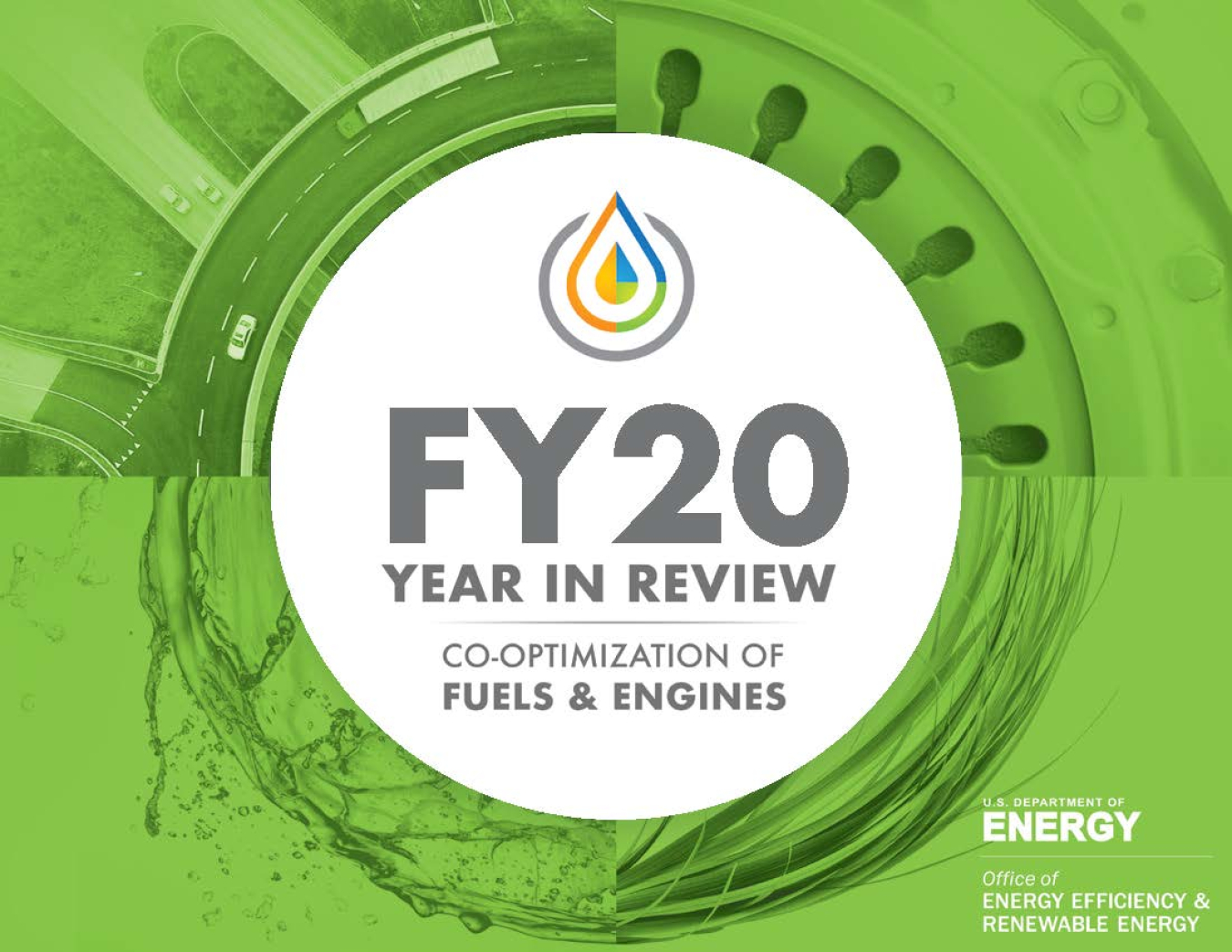The Co-Optima Initiative is releasing its Year in Review Report from 2020.
Office of Critical Minerals and Energy Innovation
May 5, 2021
A report released this week highlights the most significant breakthroughs of the last year in the U.S. Department of Energy’s (DOE) Co-Optimization of Fuels & Engines (Co-Optima) initiative, with details on findings that could translate into significant greenhouse gas (GHG) and tailpipe emissions reductions. This collaborative research effort has brought together top scientists, engineers, and analysts from across the nation to examine how simultaneous improvements to fuels and engines can maximize energy efficiency and the use of renewable fuels, while decreasing transportation sector emissions for the entire on-road fleet.
Co-Optima researchers are focused on identifying and understanding fuel components known as blendstocks, which can be produced from a wide spectrum of common domestic resources. These include renewable domestic biomass, such as forestry and agricultural waste, which can be combined with petroleum-based fuels to improve vehicles’ carbon footprint and engine performance.
Two areas of recent Co-Optima heavy-duty and medium-duty research have concentrated on increasing the renewable content of diesel fuel for use in the heavy-duty and medium duty engines typically found in today’s commercial vehicles and revolutionary new truck engine designs. Research in the light-duty engine area has focused on multimode approaches that combine a range of combustion strategies. In the last year, Co-Optima research has:
- Revealed strong potential for many candidate blendstocks to reduce criteria pollutant emissions and cut life cycle GHG emissions by more than 60% compared to petroleum-derived diesel.
- Identified bio-based blendstocks that show potential to increase efficiency and reduce GHG emissions when used in multimode engines.
- Demonstrated that advanced combustion modes can boost efficiency and cut emissions for vehicles under typical driving conditions, while maintaining power density and efficiency gains.
Through a competitive process, last year DOE selected seven industry-led projects to accelerate the development and adoption of commercial high-performance biofuels by leveraging the unique experimental and computational capabilities of the national laboratories. Awardees joined Argonne, Idaho, Lawrence Berkeley, Lawrence Livermore, Los Alamos, Oak Ridge, Pacific Northwest, and Sandia National Laboratories; the National Renewable Energy Laboratory; and more than 20 universities and companies in Co-Optima initiative research.
Sponsored by DOE’s Vehicle Technologies Office and Bioenergy Technologies Office, the Co-Optima initiative is designed to provide American industry with the scientific underpinnings needed to maximize vehicle performance and efficiency, leverage domestic fuel resources, and reduce life cycle emissions.
Read the full report, get more details on consortium partners and projects, and learn more about the Co-Optima initiative.

